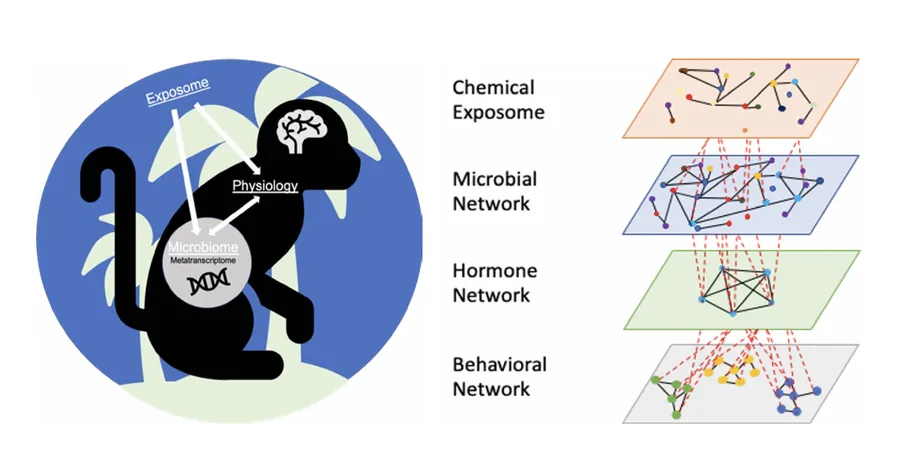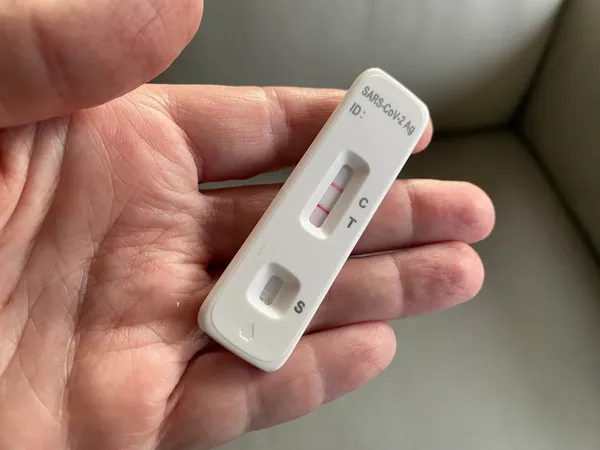
Revealing the Hidden Danger: How Pollution Impacts Primate Health Through Their Gut and Hormones
2025-09-10
Author: Jacques
The Impact of Pollution on Primate Well-Being
In an eye-opening discussion, Michael Wasserman from Indiana University sheds light on a concerning issue: the interaction between environmental pollutants, our gut microbiome, and neuroendocrine systems in wild primates. As the planet faces unprecedented changes, understanding these connections could unveil critical insights into both wildlife and human health.
What is the Chemical Exposome?
The term 'exposome' refers to the totality of environmental exposures a living organism experiences throughout its life. This includes a wide range of chemicals, from pesticides and plastics to heavy metals. For primates, these pollutants have dire consequences. Not only can they disrupt hormonal balance within the neuroendocrine system, but they can also alter the composition of gut bacteria—vital players in health and metabolism.
The Power of Gut Microbiome in Primate Health
The gut microbiome is essential for various bodily functions in primates, influencing everything from metabolism to immune responses. Remarkably, nearly one-third of the molecules present in an animal’s bloodstream originate from these microbes. They help break down plant fibers, producing short-chain fatty acids (SCFAs) that serve as energy sources and signaling molecules. For instance, compounds like butyrate not only fuel the body but also enhance immune function and protect against inflammation.
How Gut Microbes Influence Brain Function
Gut health and brain health are intricately connected. Specific gut microbes can produce neurotransmitters, such as serotonin and dopamine, that communicate directly with the brain. These interactions, explored under the field of microbial endocrinology, reveal that gut bacteria have adapted mechanisms to respond to host hormones, shaping both microbial composition and host behavior.
Consequences of Microbial Imbalance
A disruption in the balance of gut microbes, known as dysbiosis, can lead to various health issues, including neurological and gastrointestinal disorders. By studying non-human primates in their natural habitats, researchers can track the profound effects of environment on microbial communities and hormone levels. A recent study on howler monkeys in Panama discovered significant links between gut diversity and hormone levels like cortisol.
Connecting the Dots: Pollution, Gut Microbiome, and Hormonal Health
The interplay of the chemical exposome, gut microbiome, and neuroendocrine system paints a complex picture of primate health. Pollution from pesticides, for instance, profoundly disrupts these biological systems. Studies have shown that pesticides can enter delicate ecosystems, affecting gut bacteria, increasing inflammation, and even leading to obesity. In Uganda's Kibale National Park, there’s alarming evidence that exposure to such pollutants is linked to altered cortisol levels in juvenile primates.
Why Understanding These Interactions Matters
As we unravel these intricate relationships, it becomes clear that the health of wild primates offers significant insights into broader environmental and public health issues. By understanding how pollutants affect not just primates but potential human health outcomes, we shine a light on the urgent need for protecting our environment. The research ahead could be pivotal for crafting effective strategies to mitigate these risks, ensuring a healthier planet for all.









 Brasil (PT)
Brasil (PT)
 Canada (EN)
Canada (EN)
 Chile (ES)
Chile (ES)
 Česko (CS)
Česko (CS)
 대한민국 (KO)
대한민국 (KO)
 España (ES)
España (ES)
 France (FR)
France (FR)
 Hong Kong (EN)
Hong Kong (EN)
 Italia (IT)
Italia (IT)
 日本 (JA)
日本 (JA)
 Magyarország (HU)
Magyarország (HU)
 Norge (NO)
Norge (NO)
 Polska (PL)
Polska (PL)
 Schweiz (DE)
Schweiz (DE)
 Singapore (EN)
Singapore (EN)
 Sverige (SV)
Sverige (SV)
 Suomi (FI)
Suomi (FI)
 Türkiye (TR)
Türkiye (TR)
 الإمارات العربية المتحدة (AR)
الإمارات العربية المتحدة (AR)